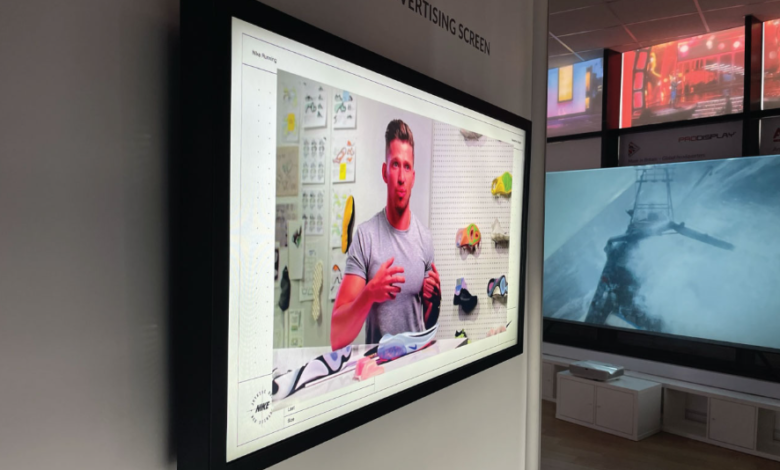High Brightness Display: The Ultimate Guide to Brighter, Clearer, and More Efficient Screens

Introduction to High Brightness Display Technology
In today’s fast-paced digital world, display clarity and brightness play a major role in delivering engaging visual experiences. Whether it’s outdoor advertising, cockpit monitors, or industrial control panels, the demand for High Brightness Displays has skyrocketed. These advanced screens are engineered to provide exceptional visibility under direct sunlight, ensuring crystal-clear readability in any environment.
The term “high brightness” typically refers to displays capable of producing over 1,000 nits of luminance — much brighter than typical consumer-grade screens. This innovation has transformed the way we view content outdoors and in high-ambient-light environments.
How High Brightness Displays Work
The Role of Nits in Measuring Brightness
The brightness of a display is measured in nits (cd/m²). Standard indoor monitors range between 250–350 nits, while High Brightness Displays start from 1,000 nits and can exceed 5,000 nits for outdoor use. Higher nit values ensure content remains legible even in direct sunlight.
LCD vs LED vs OLED Brightness Comparison
- LCD: Uses backlighting; efficient but limited brightness potential.
- LED: Delivers better brightness control and energy efficiency.
- OLED: Offers rich contrast but can struggle with sustained high brightness in sunlight.
In most industrial applications, LED-backlit LCDs remain the preferred choice for high brightness.
Backlight and Optical Film Technologies Explained
High Brightness Displays utilize advanced optical films to diffuse and enhance backlight uniformity. Technologies like dual brightness enhancement films (DBEF) and quantum dot filters further increase light efficiency without drastically raising power consumption.
Key Features of a High Brightness Display
Enhanced Readability in Sunlight
The main advantage is sunlight readability. These displays employ anti-glare coatings, optical bonding, and auto-brightness sensors to adjust brightness dynamically, ensuring maximum visibility.
Energy Efficiency and Heat Management
Modern displays integrate low-power LEDs and thermal management systems that prevent overheating even in continuous 24/7 operations.
Wide Color Gamut and Contrast Ratio
With HDR and wide-gamut support, high brightness screens produce vivid, lifelike visuals that maintain accurate color reproduction even under intense light.
Applications of High Brightness Displays Across Industries
Outdoor Digital Signage and Advertising
Retailers and marketers use High Brightness Displays for outdoor billboards, bus stops, and kiosks. These screens remain clear and vibrant despite harsh sunlight, attracting more attention from passersby.
Marine and Aviation Displays
In boats, aircraft, and cockpits, sunlight and glare are constant challenges. High brightness ensures critical information is visible to pilots and operators at all times.
Medical, Military, and Industrial Equipment
These sectors demand precision and reliability. High Brightness Displays deliver durable performance in extreme conditions, with high contrast and ruggedized construction.
Benefits of Using High Brightness Displays
Improved User Experience and Visibility
By ensuring readability in bright environments, they enhance overall usability and safety.
Increased Durability and Reliability
With optical bonding and protective glass, these displays resist dust, moisture, and impact.
Better Brand Engagement in Outdoor Settings
Brighter screens capture more attention, improving brand recall and message retention in advertising.
How to Choose the Right High Brightness Display
When selecting a display, consider:
- Brightness rating (at least 1,000 nits for outdoor use)
- Anti-reflective coating to minimize glare
- Optical bonding for durability
- Temperature range and power efficiency
It’s also wise to evaluate vendor reputation and warranty coverage to ensure long-term reliability.
Common Myths About High Brightness Displays
“Higher Brightness Means More Power Consumption”
Not necessarily. Advanced LED technology optimizes light output efficiently, often using less power than older displays.
“All Bright Displays Are the Same”
Quality varies greatly. Only professional-grade units with proper thermal control and optical bonding can handle outdoor conditions reliably.
The Future of High Brightness Display Technology
Advances in MicroLED and Quantum Dot Displays
Emerging MicroLED and Quantum Dot technologies promise even higher brightness with better color accuracy and lower energy consumption.
Integration with Smart IoT Devices
Future displays will be IoT-enabled, allowing for remote monitoring, automatic calibration, and predictive maintenance.
Maintenance and Care Tips for Longevity
- Clean using a microfiber cloth and non-abrasive cleaner.
- Avoid extreme heat and humidity.
- Perform regular firmware updates to optimize performance.
FAQs About High Brightness Displays
Q1. What qualifies a display as “high brightness”?
A screen producing 1,000 nits or more is typically considered high brightness.
Q2. Are high brightness displays energy efficient?
Yes, newer LED technologies provide brightness without excessive energy draw.
Q3. Can I use a regular monitor outdoors?
No, standard monitors are not designed to combat glare or high ambient light.
Q4. What is optical bonding, and why is it important?
It eliminates air gaps between layers, reducing reflection and improving durability.
Q5. How long do high brightness displays last?
Most offer 50,000+ hours of continuous operation with proper maintenance.
Q6. Where can I buy industrial-grade high brightness displays?
Trusted suppliers like Advantech, LG Display, and Samsung provide certified solutions. Learn more here.
Conclusion
High Brightness Displays have revolutionized how we experience digital content outdoors and in bright environments. With ongoing advancements in LED, MicroLED, and optical bonding technologies, the future looks dazzling — literally. Whether for commercial, industrial, or public use, these displays combine durability, efficiency, and unmatched clarity, making them an essential investment in modern visual communication.




